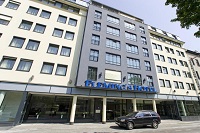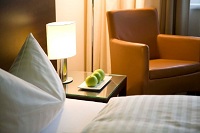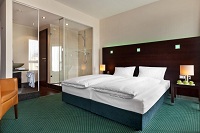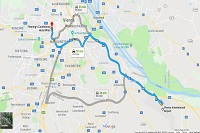Venue & Hospitality
Vienna, Austria
Conference Dates: July 02-04, 2018
Hotel Services & Amenities
- Audio/Visual Equipment Rental.
- Business Center.
- Business Phone Service.
- Complimentary Printing Service.
- Express Mail.
- Fax.
- Meeting Rooms.
- Office Rental.
- Photo Copying Service.
- Secretarial Service.
- Telex.
- Typewriter.
- Video Conference.
- Video Messaging.
- Video Phone.
- ATM.
- Baggage Storage.



Transportation
Driving Directions to
Directions from Vienna International Airport to Fleming’s Conference Hotel Vienna, Austria. Through Cab: : Distance from Airport to Hotel: 24.7 km Time period: 29 minutes (via A4 and B221 Fastest route, lighter traffic than usual) Get on A4 from Parkstraße and Ausfahrtsstraße 6 min (2.9 Km) Continue on A4 to Wien. Take exit Gürtel/Landstraße from A23 10 min (15.0 Km) Drive to B221 14 min (6.8 Km) Through City Airport train: : Vienna International Airport Vienna Airport, 1300 Schwechat, Austria Vienna Airport Station Wien Mitte-Landstraße (CAT) train station 16 min (non-stop) Center Vienna Mitte Walk About 1 min Landstraße Underground U3 Vienna Ottakring 9 min (7 stops) Westbahnhof Walk About 3 min, 250 m Westbahnhof Walk About 3 min, 250 m
Route Map

About City
Vienna is the capital and largest city of Austria and one of the nine states of Austria. Vienna is Austria’s primary city, with a population of about 1.8 million and its cultural, economic and political centre. In 2001, the city centre was designated a UNESCO World Heritage Site. Apart from being regarded as the City of Music because of its musical legacy, Vienna is also said to be “The City of Dreams” because it was home to the world’s first psycho-analyst – Sigmund Freud. Austria is one of the 14 richest countries in the world in terms of GD per capita and has a well-developed social market economy, and a high standard of living. Until the 1980s, many of Austria’s largest industry firms were nationalised. However, since Austria became a member state of the European Union it has gained closer ties to other European Union economies, reducing its economic dependence on Germany. In recent years however, privatisation has reduced state holdings to a level comparable to other European economies. Vienna’s history dates back to the first post-Christian century when the Romans established the military camp Vindobona. Today’s cityscape is characterised by the abundance of baroque buildings created mostly under the rule of Empress Maria Theresia and Emperor Franz Joseph who was largely responsible for the monumental architecture round the Ringstraße. To experience Vienna at its fullest we have created some things to do in Vienna. Schloss Schönbrunn, the former imperial summer residence, is one of the most popular sights. The sumptuous palace with the beautifully tended formal gardens, the Gloriette monument, the Palm House, and the zoo attract hordes of visitors each year. The huge Hofburg (Imperial Palace) was the base of the Habsburgs for over six centuries, and is an impressive repository of culture and heritage. The splendid baroque Belvedere Palace today houses the Österreichische Galerie (Austrian Gallery) displaying the largest collection of works by Klimt and Kokoschka as well as famous paintings by Schiele. Vienna’s prime landmarks are the gothic Stephansdom (St. Stephen’s Cathedral), the Giant Ferris Wheel in the Prater, Vienna’s old recreational park, and the Spanish Riding Schoolwith their world-famous Lipizzaner horses. Vienna has more museums and galleries of international reputation than you can shake a stick at: Kunsthistorischen Museum with the world’s largest collection of Bruegel paintings, MuseumsQuartier with Leopold Museum (Schiele), Museum Moderner Kunst (Museum of Modern Art), Architekturzentrum (Architectural Center) and Kunsthalle rank among the city's most important cultural venues. The Albertina is home to the world’s largest collection of graphic arts and prints (60,000 drawings, 1 million prints). Vienna owes much of its international fame to the many celebrated composer who lived and worked here including Strauß, Mozart, Beethoven and Haydn. The Vienna Philharmonic Orchestra is one of the world’s best, the Staatsoper one of the world’s leading opera houses, the Vienna Boys’ Choir one the world’s most famous. In the last years Vienna has also established itself as a great musical metropolis. In Vienna, traditional coffee houses, rustic wine taverns and the beloved sausage stand (Wuerstelstand) exist alongside with top restaurants and shops, time-honored events alternate with internationally-acclaimed extravaganzas (Life Ball) to create a unique and very special ambiance. Another special feature of Vienna are its many greenspace and recreational areas such as the Wienerwald, the Prater and the Donauinsel.
